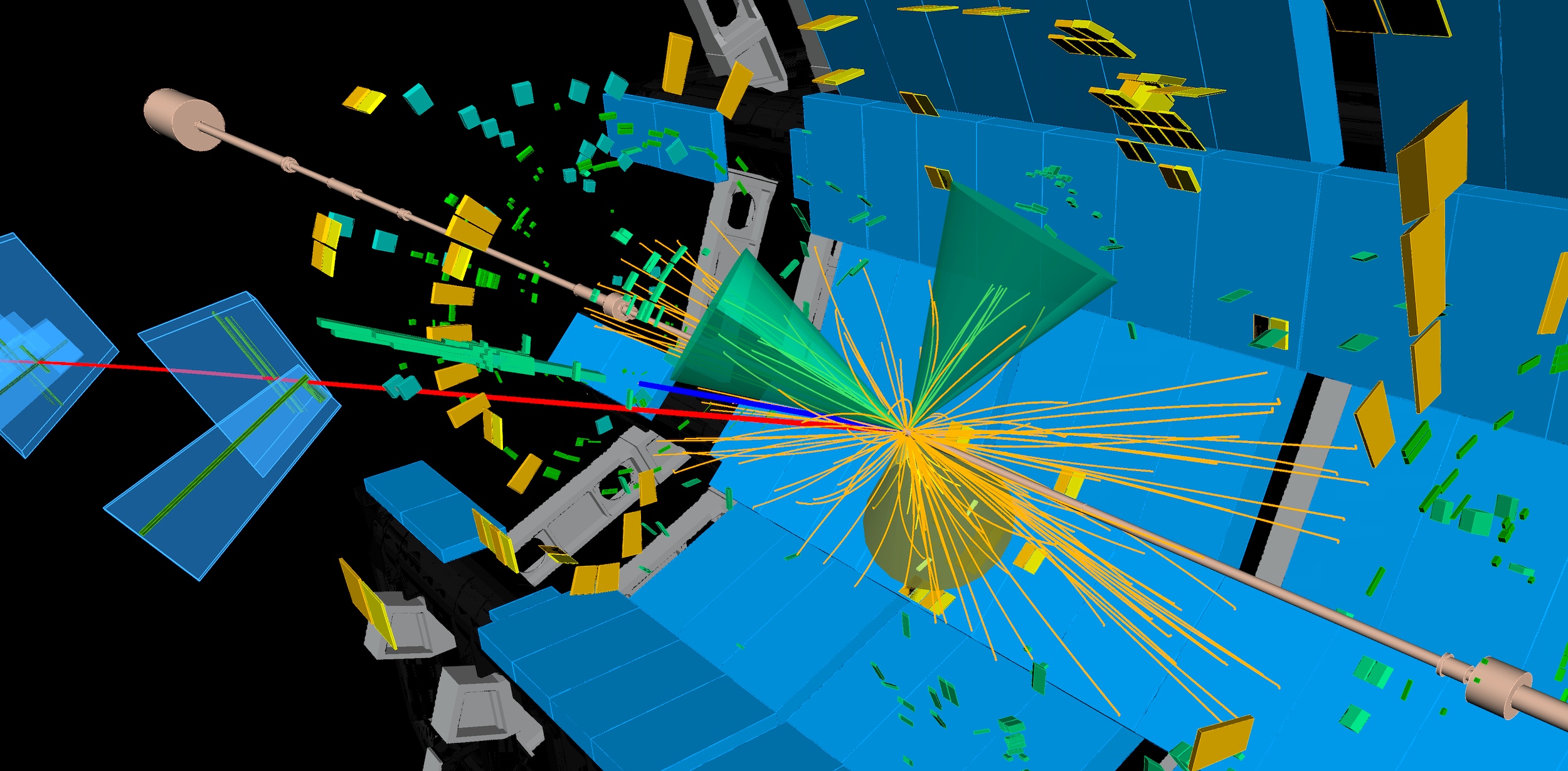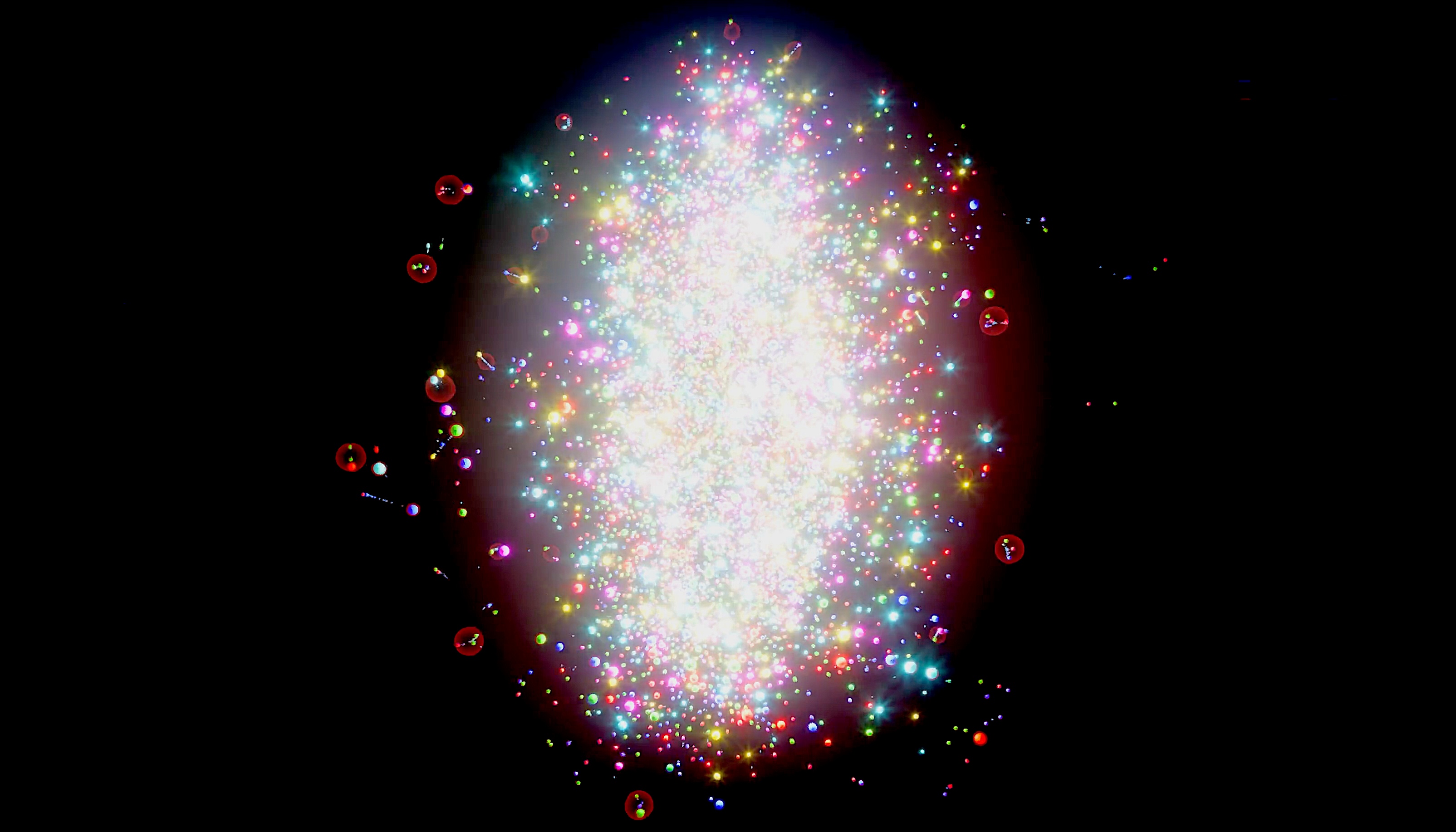ATLAS observes top quarks in proton-lead collisions
6 September 2023 | By
The ATLAS Collaboration at CERN observes the production of top-quark pairs in proton-lead ion collisions. ATLAS’ new result confirms and builds upon an earlier observation made by the CMS Collaboration, expanding it into a new decay channel. The result paves a new way for physicists to study Parton Distribution Functions (PDFs) – which describe how a proton’s momentum is distributed among its constituent quarks and gluons – in a new kinematic domain.
A tiny fraction of a second after the Big Bang, the Universe existed in a state characterised by a hot, dense plasma of quarks and gluons (the QGP). This state of matter can be recreated at the LHC through the collisions of heavy nuclei.
The top quarks created in heavy ion collisions can serve as remarkable tools for uncovering properties of the QGP. The top quark is the heaviest elementary particle of the Standard Model, with a mass of about 172 GeV. As they are so heavy, they can only be formed in the hard scattering process that leads to the creation of the plasma, and not within the plasma itself. By studying their production in proton collisions with lead ions, physicists can constrain the gluon content of Parton Distribution Functions (PDFs) in a unique kinematic region – the nuclear environment of the heavy-ion collisions allowing for comparisons to the reference proton-proton system.
Top quarks created in heavy-ion collisions can serve as remarkable tools for uncovering properties of the quark-gluon plasma – the hot, dense state that dominated the early Universe.
Because of its extremely short lifetime, the top quark decays almost immediately and does not undergo the process of “hadronisation” (where individual quarks turn into a splash of particles called jets). Instead, it usually decays into a W boson and a b-quark. The W boson can decay further, into either a pair of lighter quarks or to a lepton and neutrino. When two top quarks are produced, this results in two dominant signals in the detector: one involving leptons and jets (lepton+jets), and another involving only leptons (dilepton) accompanied by b-quarks.
In their new result, ATLAS physicists studied proton collisions with heavy lead ions at a centre-of-mass energy of 8.16 TeV. They separately observed top-quark production in both the lepton+jets and dilepton channels, and in the combined dataset. This marks the first observation of top-quark-pair production in the dilepton channel in proton-lead collisions. The combined result achieved a statistical significance well above the 5 standard deviation threshold needed to claim observation. The excellent precision of the result was achieved using a tagging technique to distinguish jets originating from b-quarks – thus improving the signal to background ratio – and by employing more inclusive lepton-selection criteria.
Combining both channels, researchers measured the production cross section with a relative uncertainty of 9%. The total uncertainty of the measurement is dominated by systematics driven by lepton+jets, while the dilepton channel is dominated by statistical precision. Researchers compared their new measurement to modifications to PDFs (see Figure 1), as well as to CMS’ measurement in proton-lead collisions and the combined ATLAS+CMS measurement in proton-proton collisions. The latter was extrapolated to the centre-of-mass energy of the new analysis and scaled to proton-lead collisions. A good agreement was found across all measurements.

Learn more
- Observation of tt-bar production in lepton+jets and dilepton channels in p+Pb collisions at 8.16 TeV with the ATLAS detector (ATLAS-CONF-2023-063)
- Quark Matter 2023 presentation by Patrycja Potepa: Probing initial state effects in nuclear collisions via jet and top quark measurements with the ATLAS detector
- CMS Collaboration: Observation of top quark production in proton-nucleus collisions (arXiv: 1709.07411)
- See all new ATLAS results presented at Quark Matter 2023.



